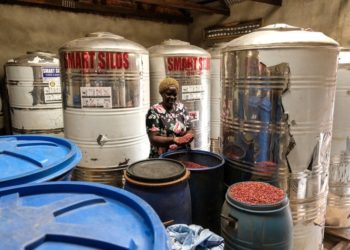Himanshi Narwal was first a symbol of tragedy, then a target of hate.
Last month, Ms. Narwal was captured in an image sitting beside her slain husband, who was among 26 people killed in a terrorist attack on the Indian side of Kashmir. As India struck Pakistan on Wednesday in retaliation, Ms. Narwal became shorthand for why India picked the name “Operation Sindoor” for its military action.
Sindoor, or vermilion powder, is a traditional marker of the marital status of Hindu women. Married women wear it either in the parting of their hair or on their foreheads, and they wipe it off if they become widowed. During the April 22 terrorist attack, many women lost their husbands, who were targeted because they were Hindu. But few received the media attention that Ms. Narwal has after the image of her by her husband’s side went viral.
The Indian government’s choice of the name Operation Sindoor signaled its intention to avenge the widowed women. On social media, the Indian Army announced the strikes with a stark image that included a jar of spilled sindoor, which resembled spattered blood.
“Operation Sindoor” also signals to right-wing Hindu groups — many of which favor more traditionally defined gender roles — that the Hindu nationalist government of Prime Minister Narendra Modi is listening to their demands for vengeance.
But some feminists have criticized the use of the word sindoor.
Hindu nationalism is predominantly driven by a male view of the world, said V. Geetha, a feminist historian who writes about gender, caste and class. “Women figure in it as objects to be protected or as mother figures goading their men to prove their heroism,” Ms. Geetha said.
In the April 22 terrorist attack, which India has linked to Pakistan, all but one of the 26 people killed were tourists visiting a scenic meadow near the town of Pahalgam in Muslim-majority Kashmir. Pakistan has denied involvement.
Of the 25 tourists, all were Hindu men, according to local reports. Women and children were spared, and some survivors reported that the attackers had told them they spared their lives so they could tell their government about what had happened.
In the chaos of that afternoon, the image of Ms. Narwal sitting by her dead husband, her wrists still adorned with the bangles worn by many Hindu brides, went viral. To many, she was a symbol of the shock and sadness accompanying the brutal attack, in which gunmen opened fire while civilians sipped tea, traveled down a zip line or rode on ponies.
Nine days later, as Ms. Narwal was still grieving the loss of her husband, Vinay Narwal, the naval officer she had been married to for less than a week, she said she wanted “peace, and only peace.” The perpetrators should be brought to justice, she told reporters at a blood donation camp on the birthday of her husband.
But she said that she did not want to see “people going against Muslims or Kashmiris.” Right-wing Hindu trolls pounced on that comment, vilifying her online and calling for revenge against Muslims for the terrorist attack.
Ms. Geetha, the historian, said that Ms. Narwal stopped becoming a symbol the moment she expressed her thoughts.
A woman, “once she speaks, the people take offense, because she ceases to be a symbol,” Ms. Geetha said. “She becomes a person who doesn’t think as you want her to think.”
Pragati K.B. is a reporter for The Times based in New Delhi, covering news from across India.
Anupreeta Das covers India and South Asia for The Times. She is based in New Delhi.
The post The Symbolism Behind India’s ‘Operation Sindoor’ appeared first on New York Times.




